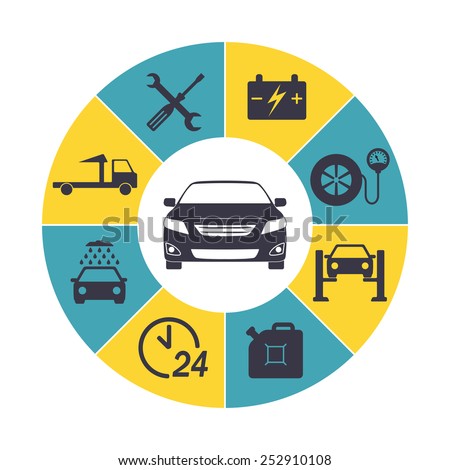Comprehending Your Car'S Caution Lighting: What Do They Truly Mean?
Comprehending Your Car'S Caution Lighting: What Do They Truly Mean?
Blog Article
Personnel Author-Hartley Stark
When you're behind the wheel, those glowing warning lights on your dashboard can be a bit bewildering. Do you understand what they're attempting to tell you about your cars and truck's health and wellness? Understanding the relevance of these lights is essential for your safety and the long life of your automobile. So, the following time among those lights turns up, wouldn't you intend to decipher its message accurately and take the necessary actions to address it?
Common Warning Lighting and Interpretations
Identify usual caution lights in your cars and truck and recognize their definitions to ensure secure driving.
One of the most typical warning lights consist of the check engine light, which indicates issues with the engine or discharges system. If this light begins, it's important to have your vehicle examined without delay.
The oil stress cautioning light indicates low oil pressure, calling for immediate attention to prevent engine damage.
A flashing battery light could suggest a faulty charging system, possibly leaving you stranded otherwise dealt with.
The tire pressure monitoring system (TPMS) light notifies you to reduced tire pressure, impacting vehicle stability and gas performance. Neglecting this might cause dangerous driving problems.
The ABS light suggests a problem with the anti-lock stopping system, compromising your ability to quit rapidly in emergency situations.
Last but not least, the coolant temperature warning light warns of engine overheating, which can lead to extreme damage otherwise dealt with promptly.
Comprehending these usual caution lights will certainly help you resolve problems immediately and maintain secure driving problems.
Significance of Prompt Interest
Comprehending the usual warning lights in your car is only the first step; the importance of promptly attending to these cautions can't be highlighted enough to ensure your security when driving.
When a warning light illuminates on your control panel, it's your car's method of connecting a possible problem that requires attention. Disregarding these warnings can cause much more severe problems later on, jeopardizing your safety and possibly costing you much more out of commission.
Trigger focus to cautioning lights can avoid malfunctions and crashes. As https://motorvehiclechassis84061.elbloglibre.com/30218099/curious-regarding-those-dashboard-warning-lights-in-your-automobile-find-out-what-they-mean-for-your-vehicle-s-health-and-safety , a flashing check engine light might indicate a misfire that, if left unattended, might create damage to the catalytic converter. Resolving https://www.heraldmailmedia.com/story/news/2022/01/14/s-s-auto-repair-virginia-avenue-halfway-scene-fire-washington-county/6530072001/ can save you from a costly repair work.
Likewise, a brake system cautioning light might indicate low brake liquid or used brake pads, vital components for your security when driving.
DIY Troubleshooting Tips
If you notice a caution light on your control panel, there are a couple of do it yourself troubleshooting suggestions you can try before seeking expert aid.
The first step is to consult your vehicle's manual to recognize what the details warning light shows. In some cases the concern can be as basic as a loose gas cap causing the check engine light. Tightening the gas cap might resolve the problem.
An additional common concern is a reduced battery, which can activate numerous alerting lights. Inspecting the battery connections for deterioration and ensuring they're secure might take care of the problem.
If a caution light continues, you can try resetting it by disconnecting the vehicle's battery for a few mins and after that reconnecting it. Additionally, examining your automobile's fluid degrees, such as oil, coolant, and brake fluid, can aid troubleshoot warning lights connected to these systems.
Conclusion
To conclude, recognizing your car's warning lights is essential for maintaining your vehicle running smoothly and securely. By immediately dealing with these alerts and understanding what they imply, you can stay clear of costly fixings and possible failures.
Keep in mind to consult your cars and truck's handbook for specific details on each alerting light and act appropriately to make sure a hassle-free driving experience.
Stay educated, stay secure when traveling!
